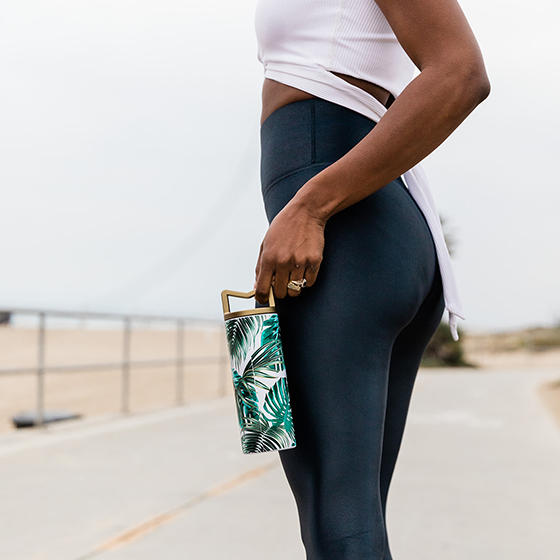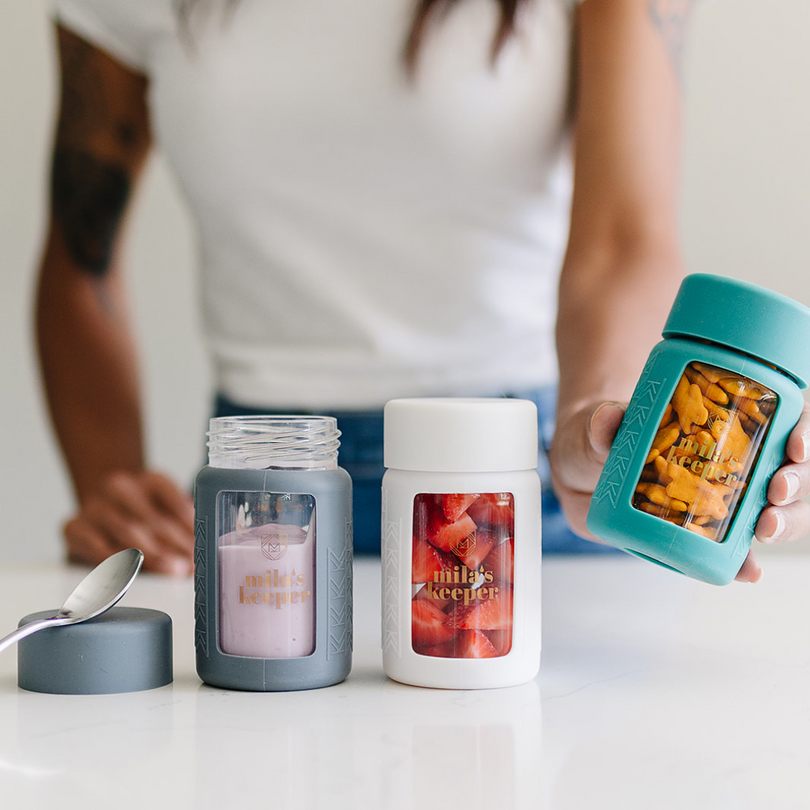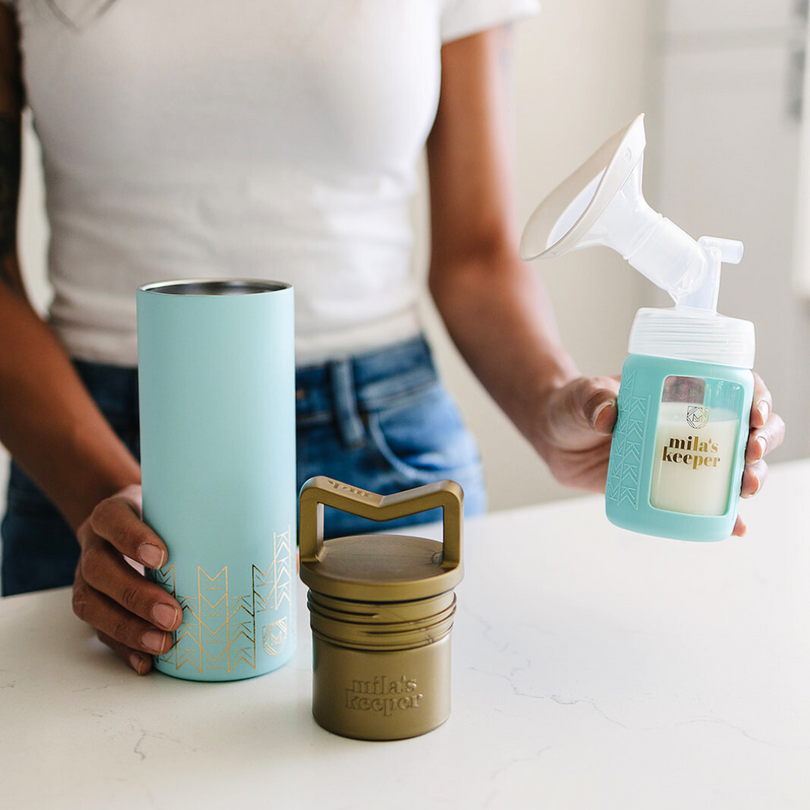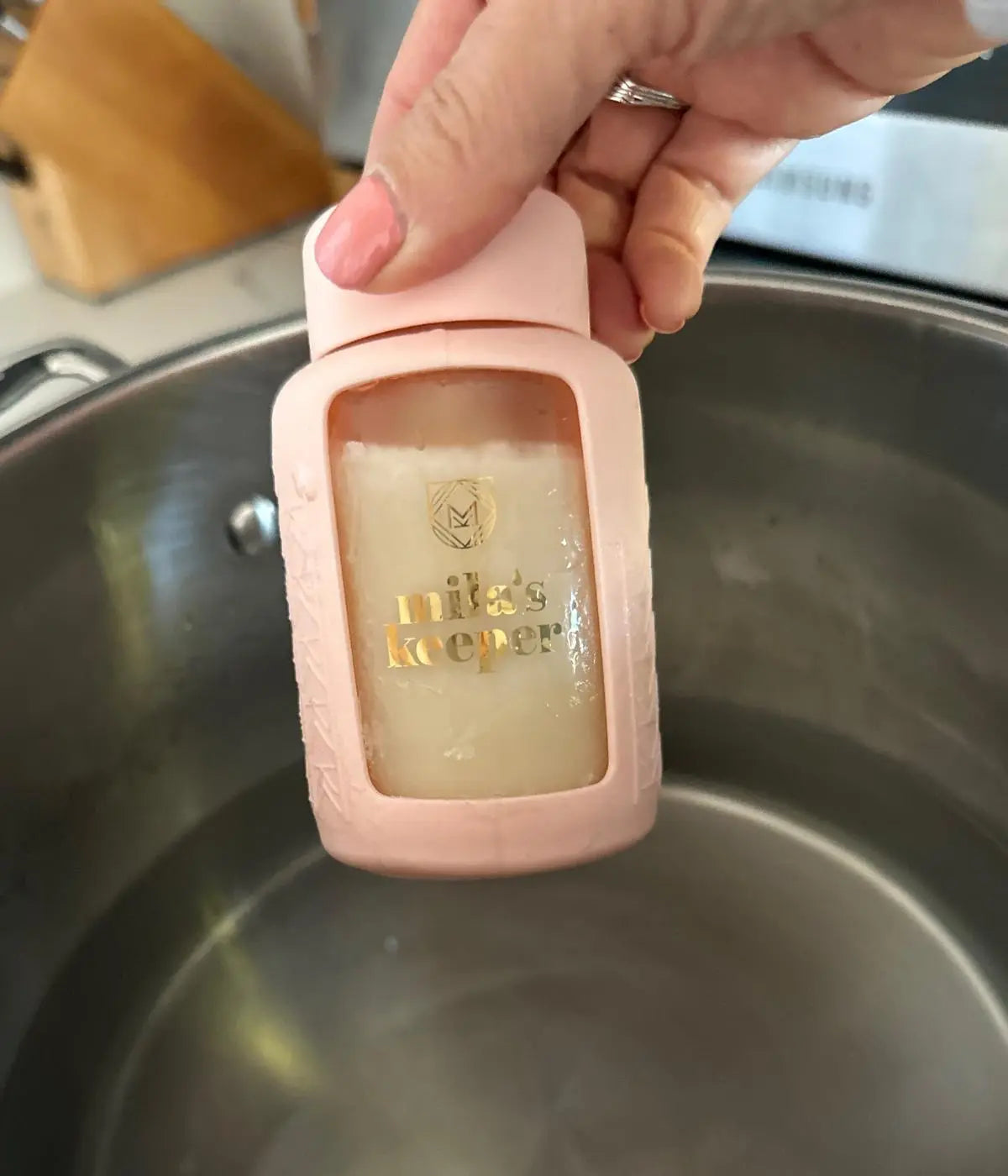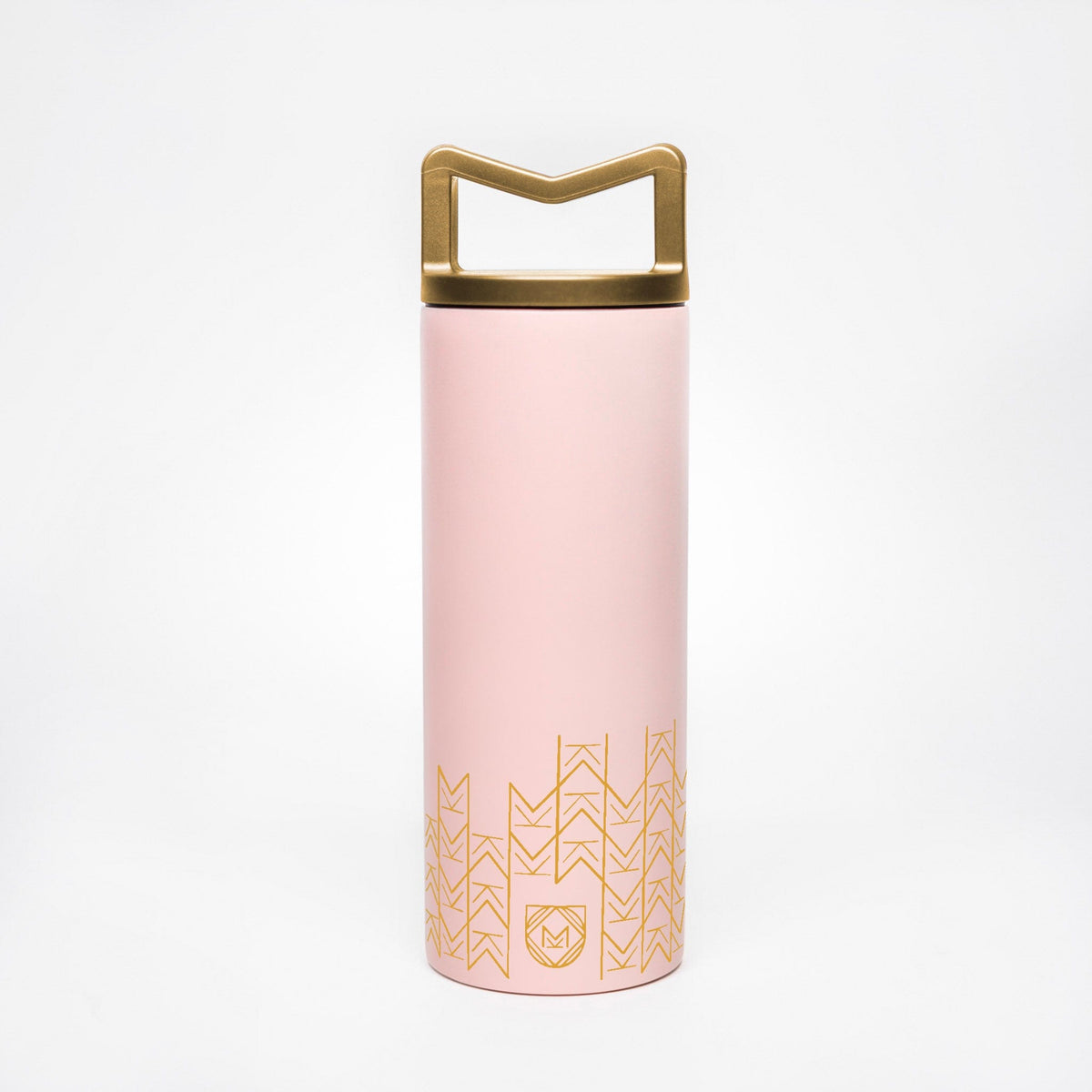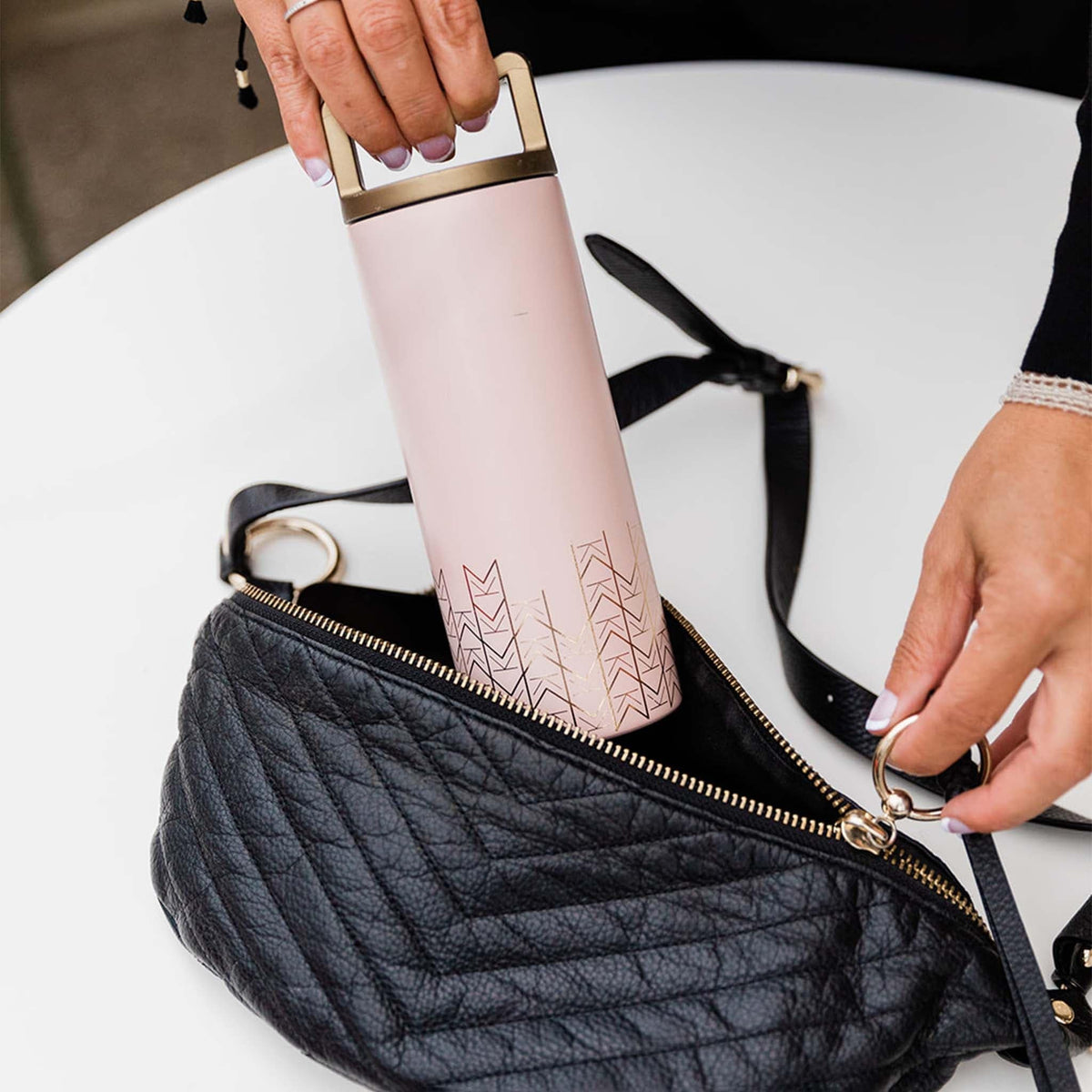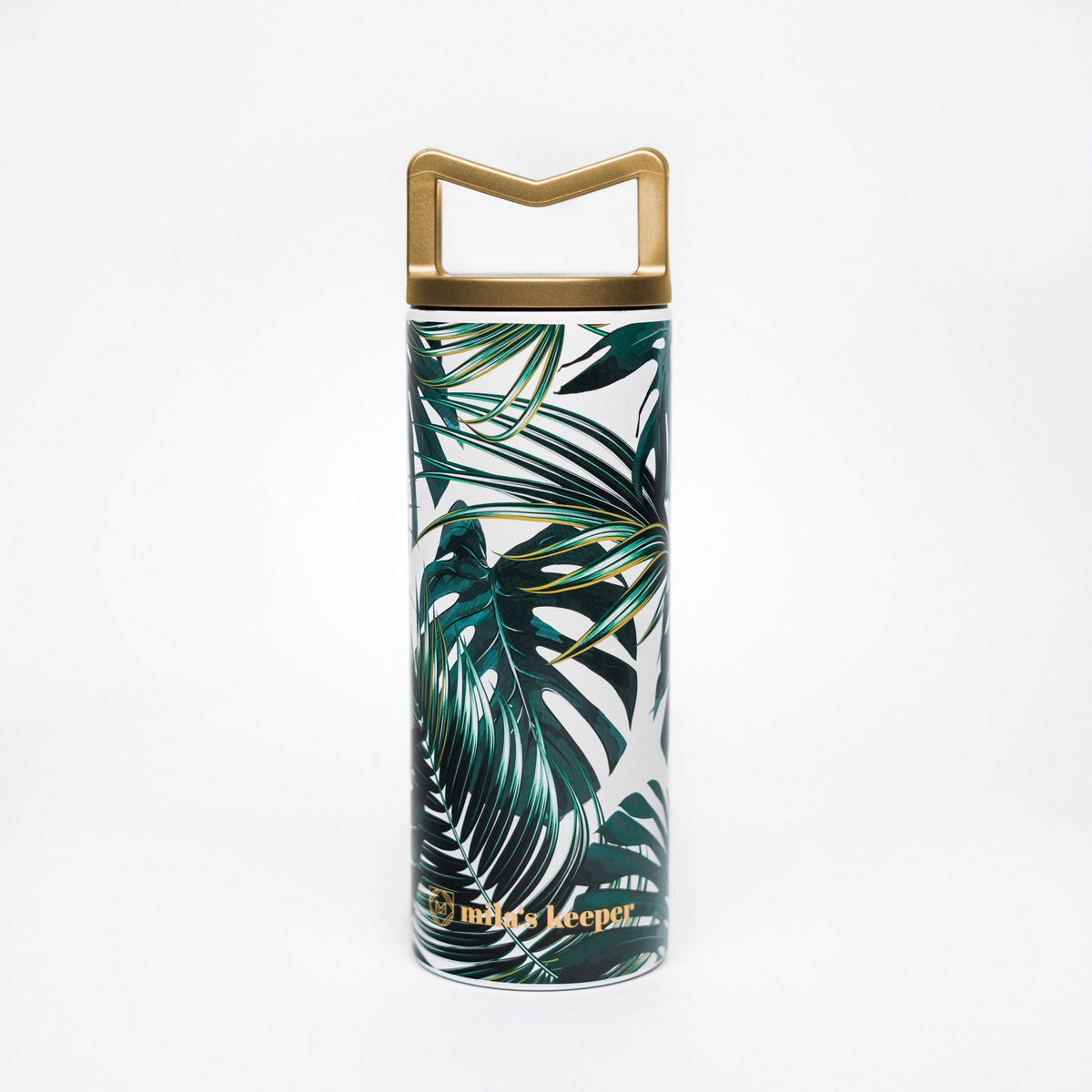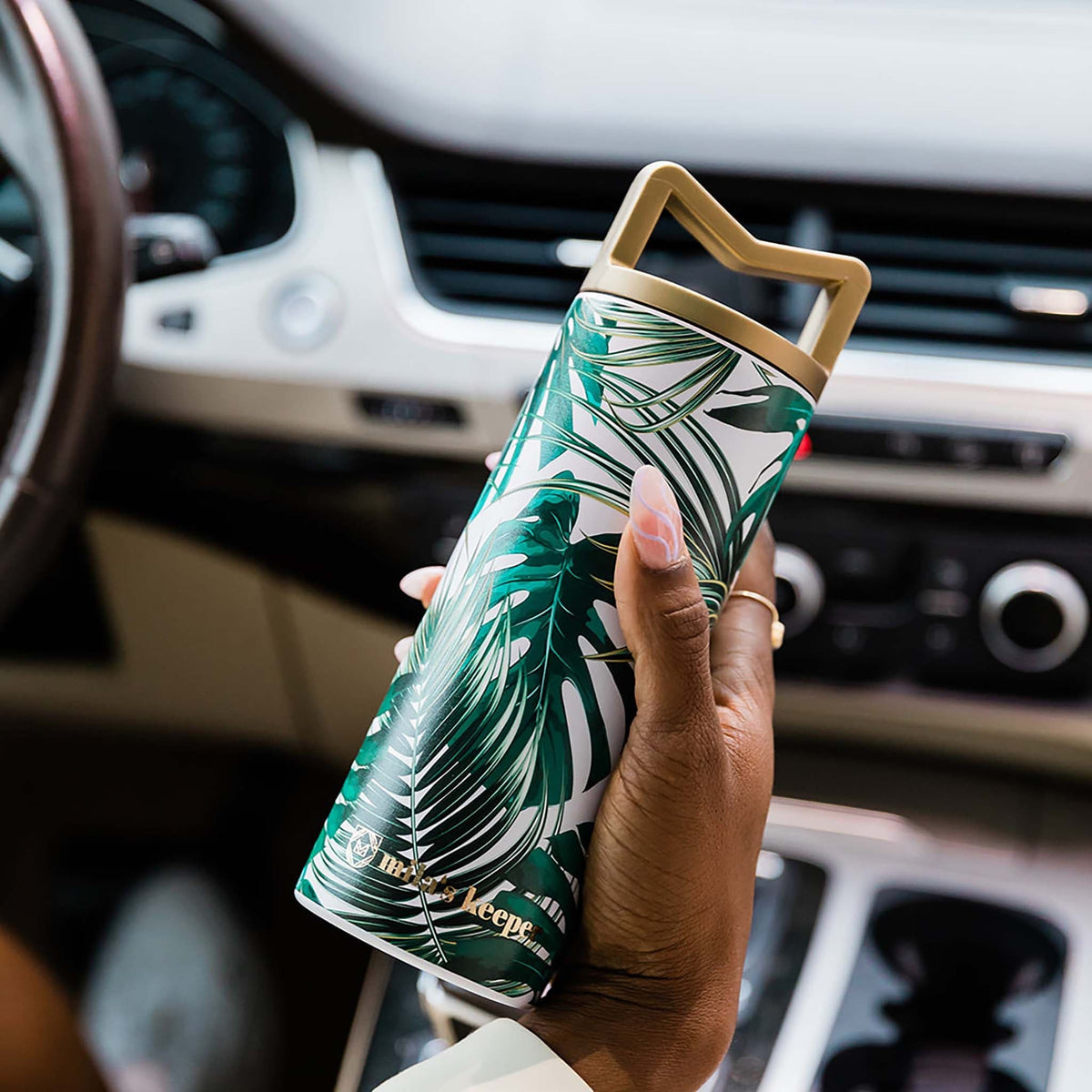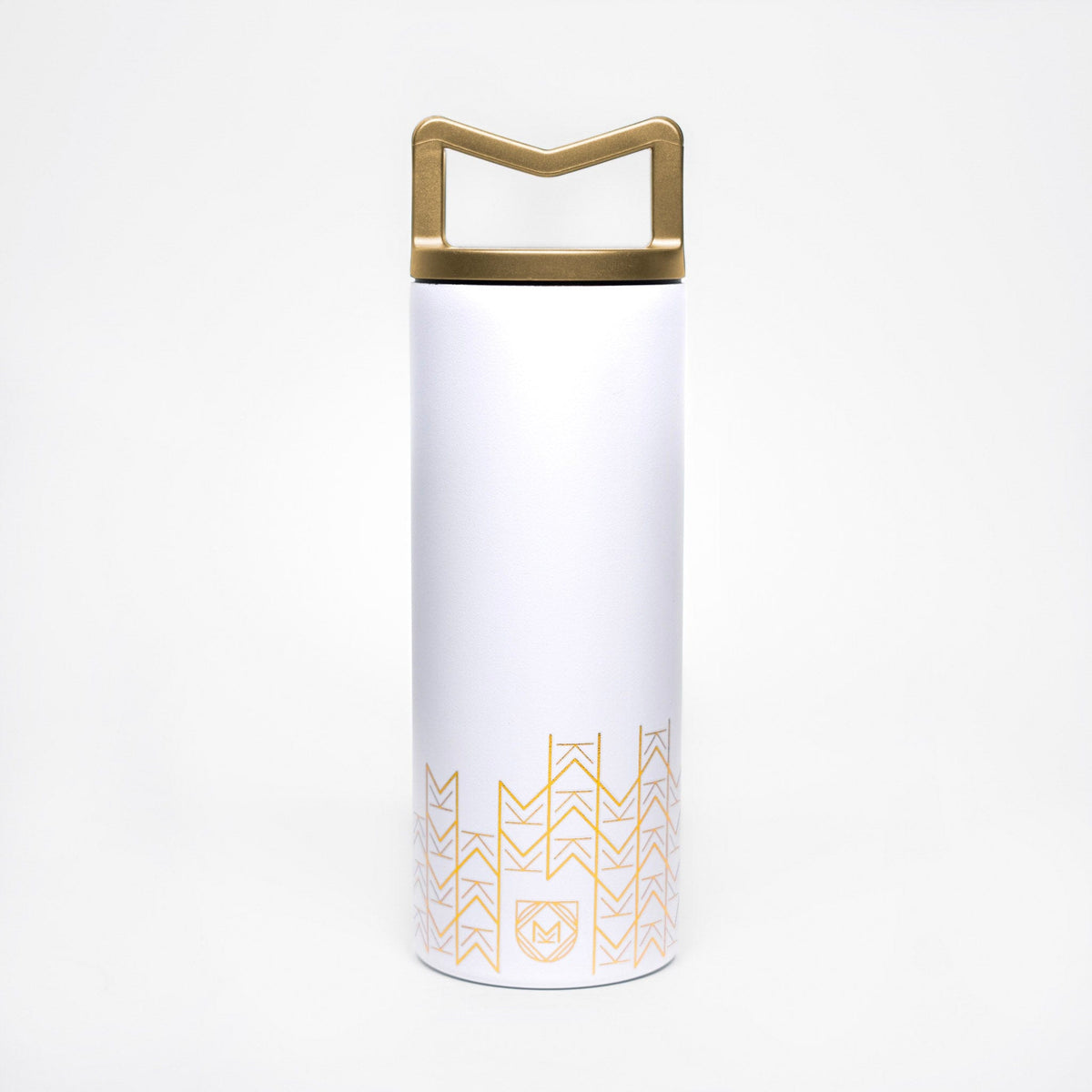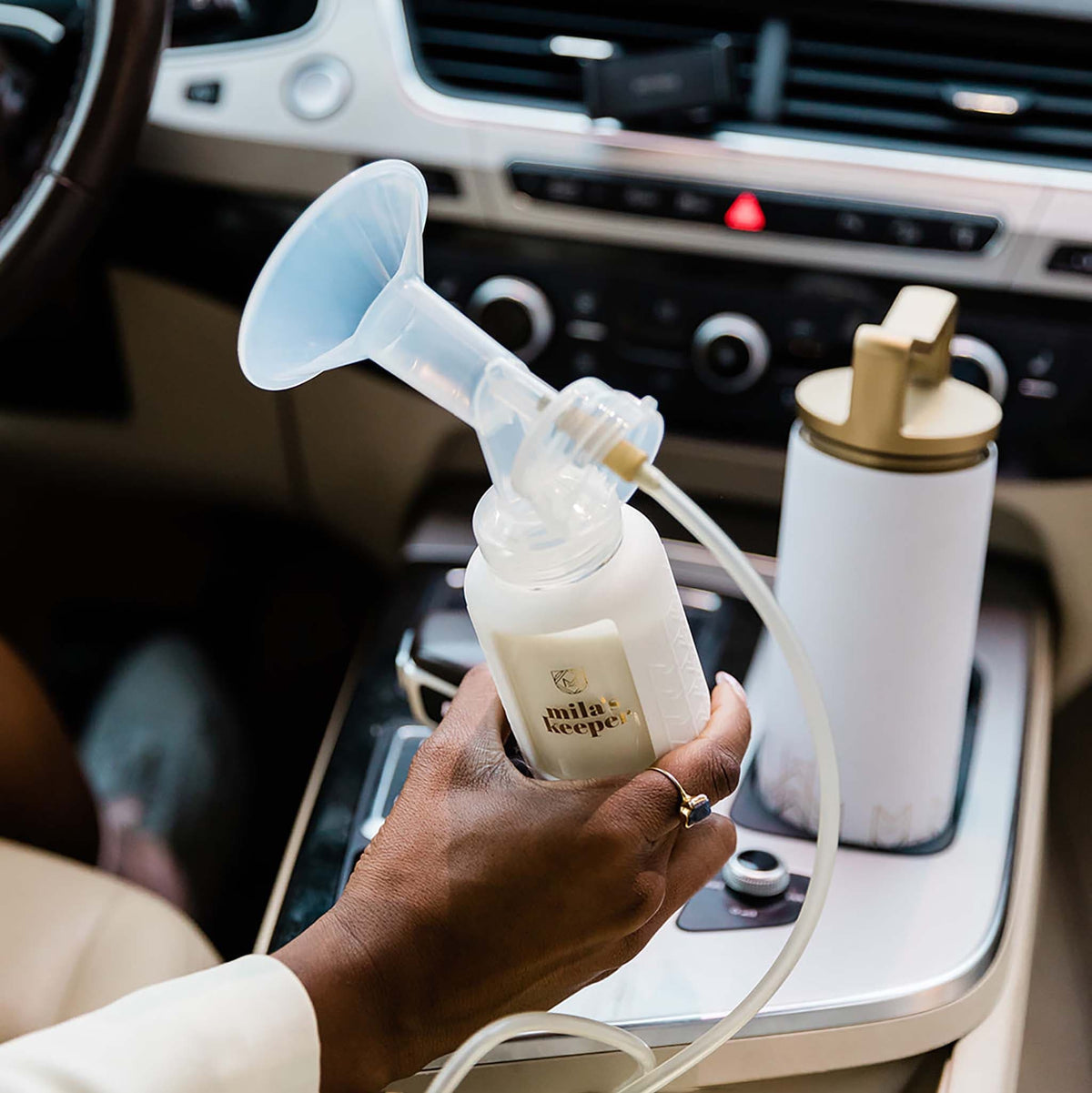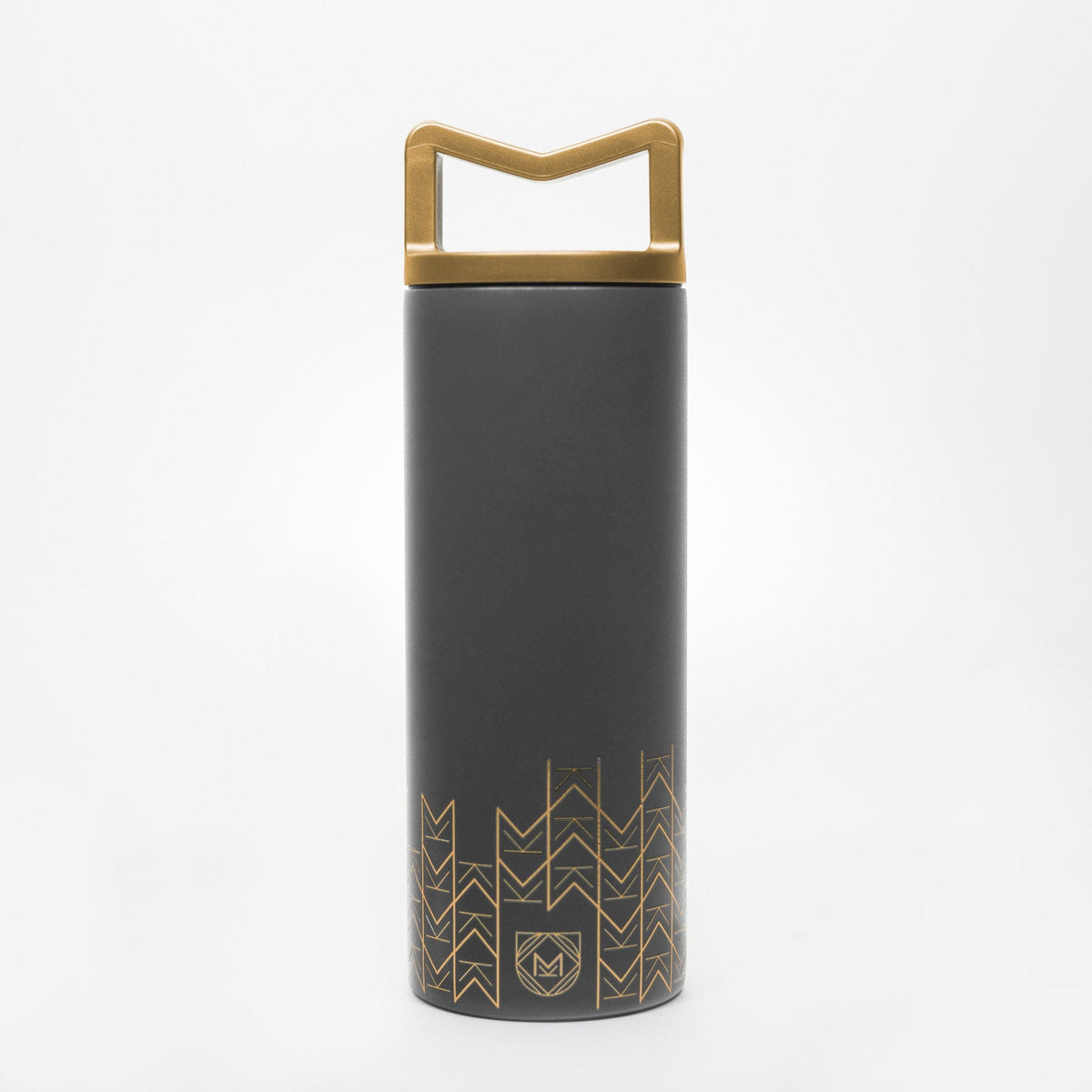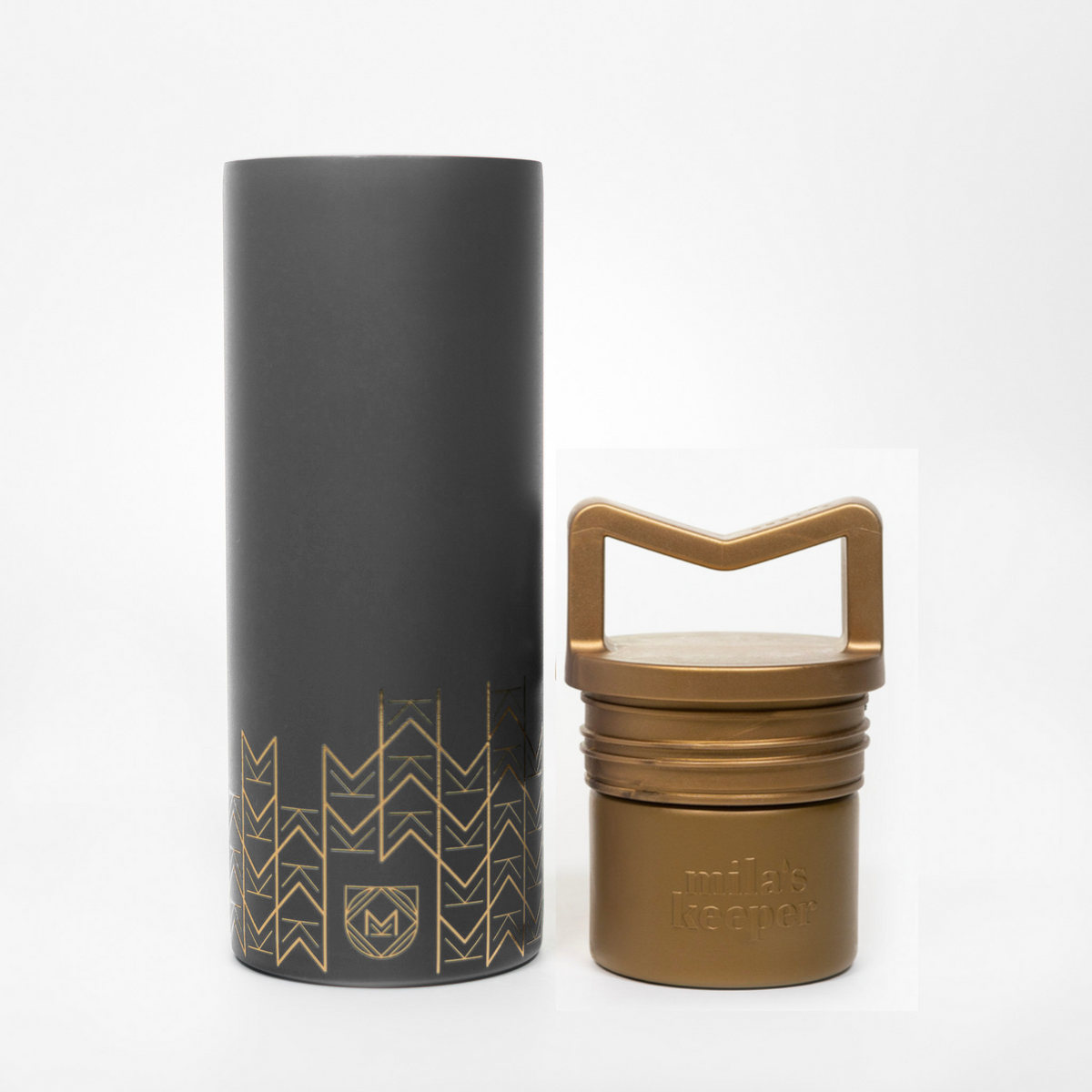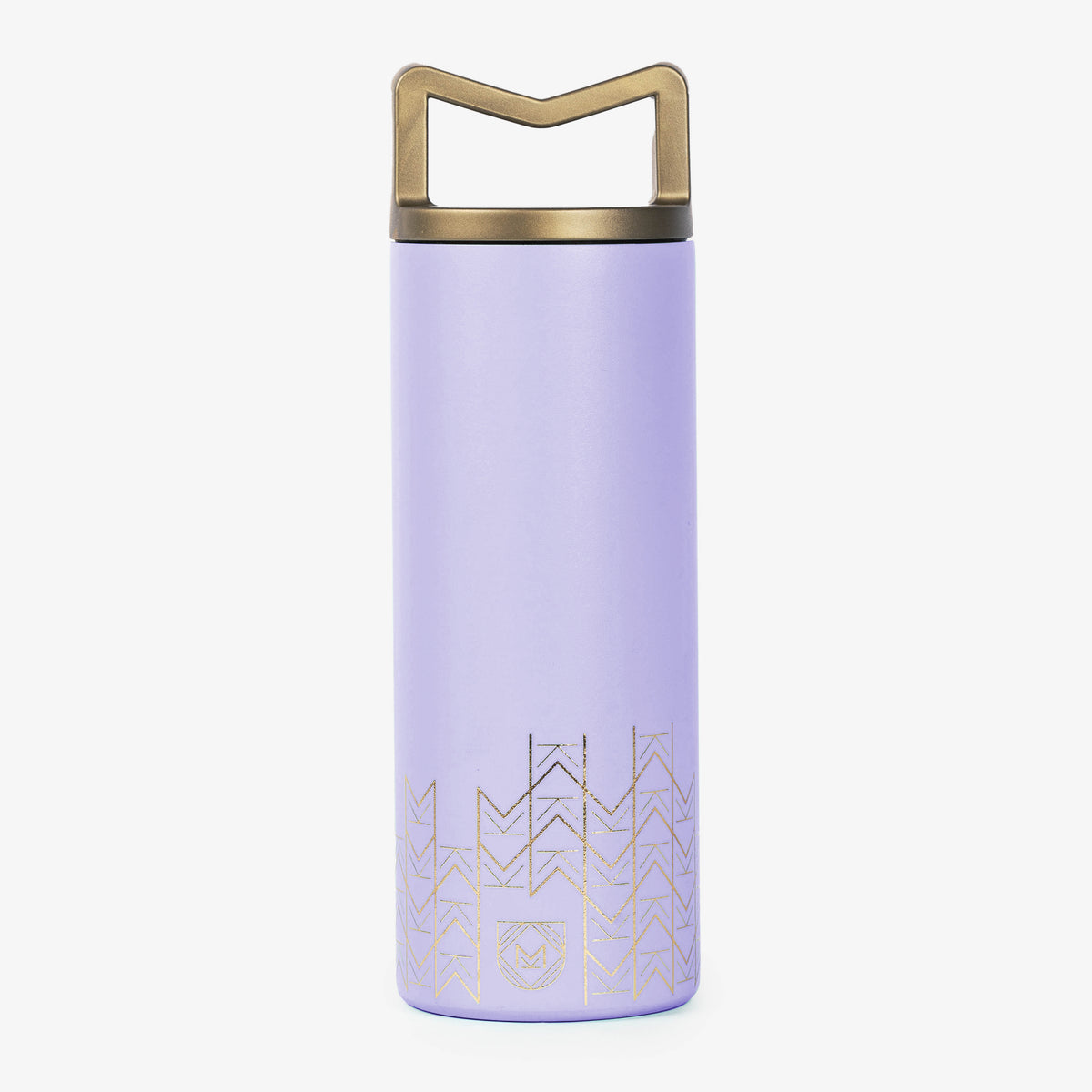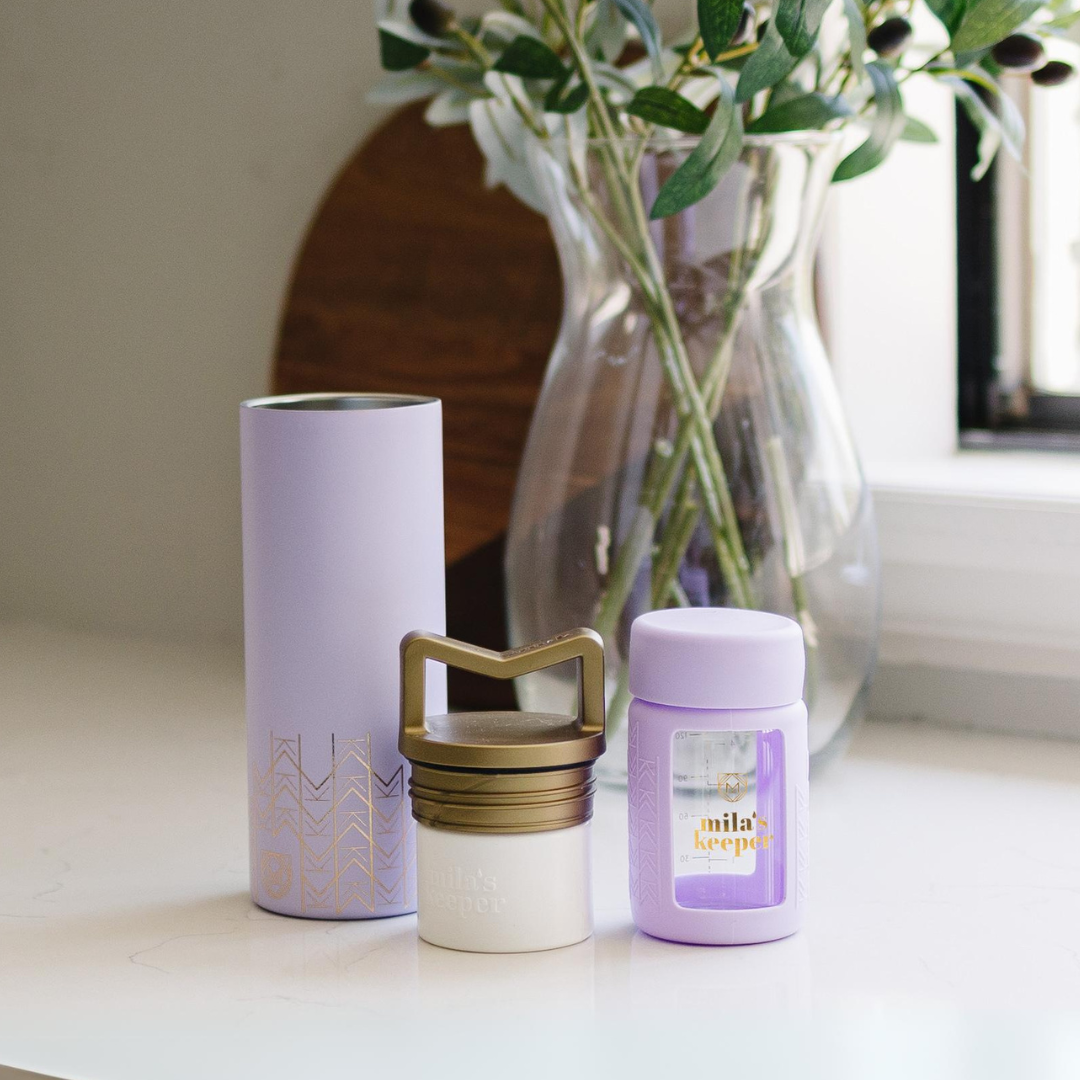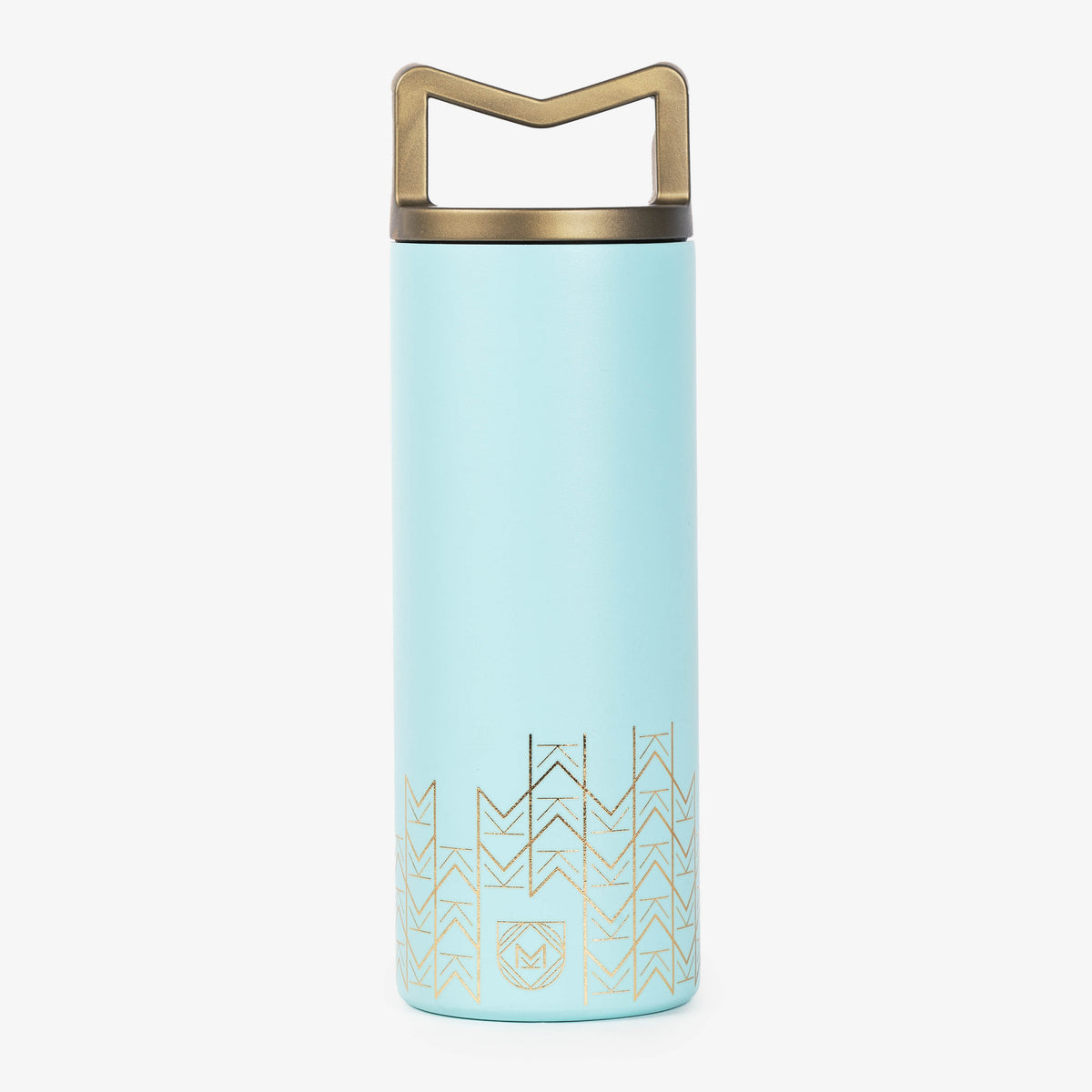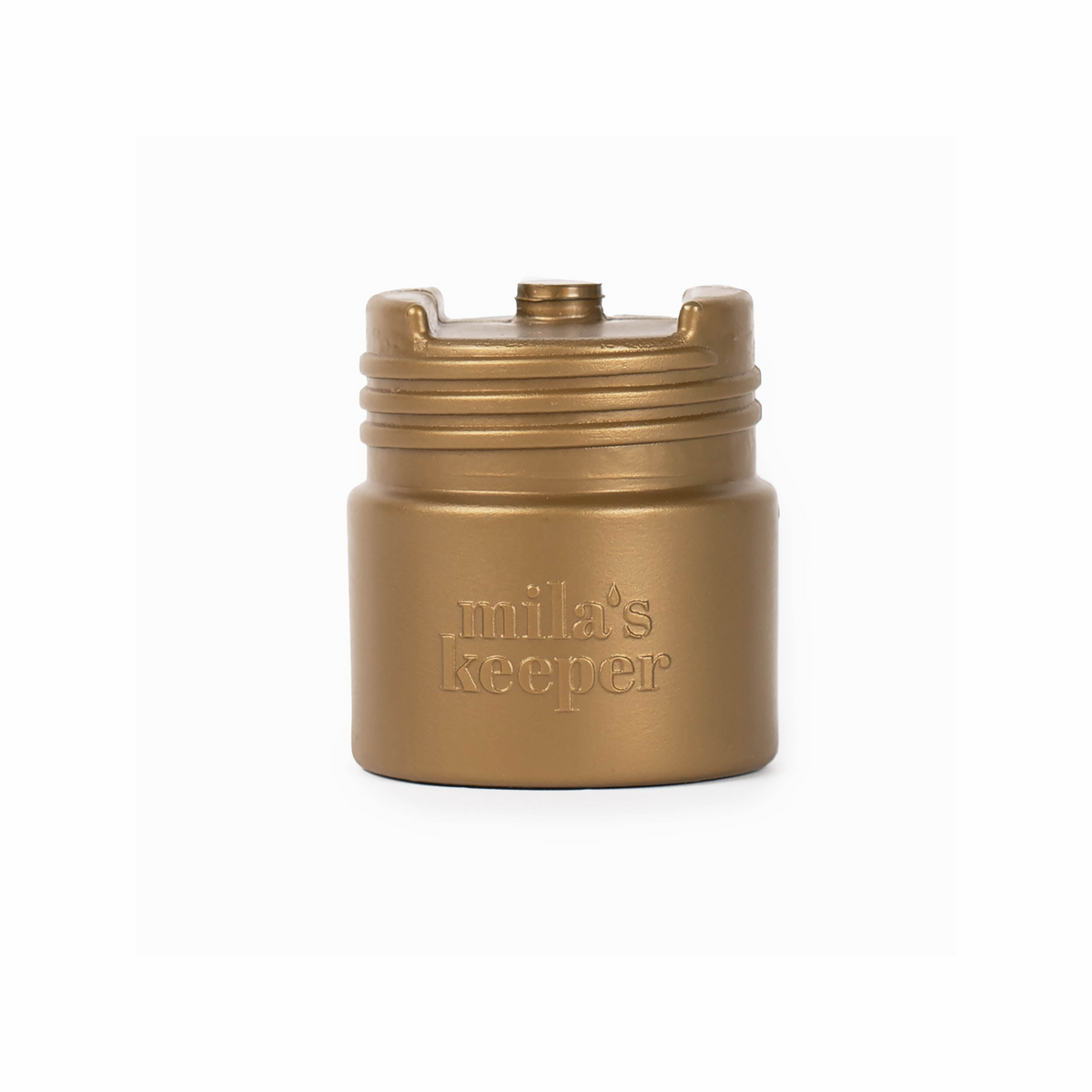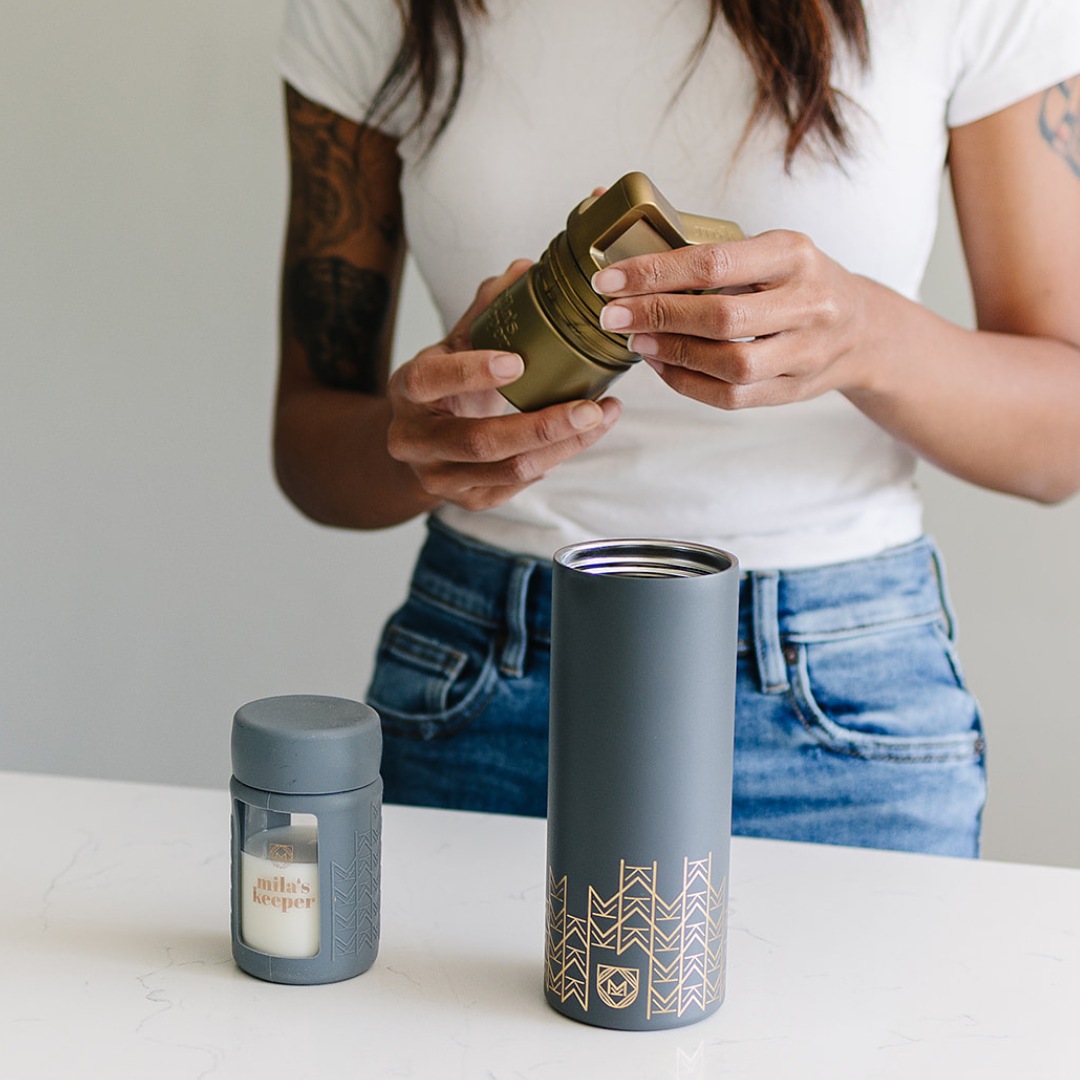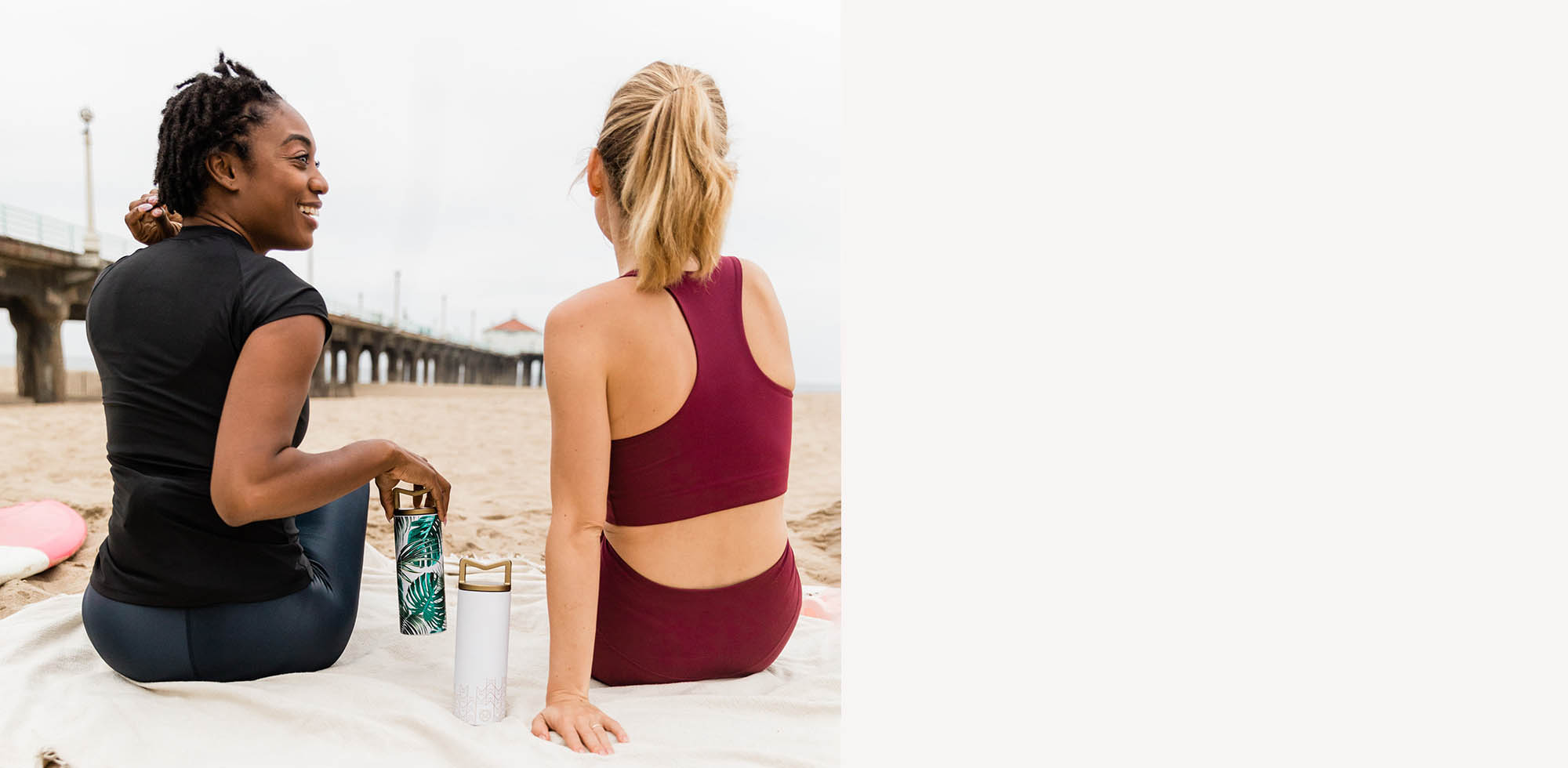If you're a breastfeeding parent or caregiver, you may have wondered if it's safe to reheat breast milk. Reheating breast milk is a common practice, but there are some important guidelines to follow to ensure the safety and quality of the milk. In this guide, we'll explore the dos and don'ts of reheating breast milk and provide you with all the information you need to make informed decisions for your baby's health!
Can You Reheat Breast Milk?
As anyone who has expressed breast milk knows, it can be a lot of work. It takes a good deal of commitment to provide breast milk for your baby. If you work outside the home, you have to sometimes jump through some hoops in order to carve out the time and space to be able to pump while at work.
If you’re pumping while simultaneously caring for your little one at home, it can seem like all you’re doing is feeding and providing the source of that food for your baby. After all that effort, it’s hard to look at a bottle of unfinished breast milk and toss it out willy-nilly. You want to use up every drop you’ve painstakingly provided, but where do you have some wiggle room and when should you draw the line?
When it come to heating up breast milk, it’s generally recommended that you only reheat breast milk once, maybe twice. The reasoning for this is that each time you heat and cool the milk, it can potentially degrade the quality and nutritional value. More importantly, though, reheating breast milk multiple times increases the risk of bacterial growth, which can be harmful to your baby.
According to the Centers for Disease Control and Prevention (CDC), once you’ve warmed up breast milk (either from frozen or refrigerated) and given it in a bottle to your baby, “if your baby did not finish the bottle, use the leftover milk within 2 hours after the baby is finished feeding. After 2 hours, leftover breast milk should be discarded.”
To play it safe, it's best to thaw and warm only the amount of breast milk that your baby will consume in one feeding to minimize waste and ensure the highest quality.

Tips on How to Reheat Breast Milk Safely and Effectively
How to Heat Frozen Breast Milk
When thawing frozen breast milk, you’ll want to do it in a gradual manner. You can place the frozen milk in the refrigerator overnight or use a bowl of lukewarm water to gently thaw it.
Is It OK to Microwave Breast Milk?
You want to avoid using hot water or a microwave. If you're wondering why can't you microwave breast milk, it's because rapid temperature changes can destroy vital nutrients and immune-boosting properties.
Once the breast milk is thawed, gently swirl the milk to evenly distribute the fat that may have separated. You don’t want to shake the milk vigorously, since this can also disrupt its composition.
How to Warm Refrigerated Breast Milk
Choose a method that ensures gradual warming. Submerging the milk container in a bowl of warm water or running it under warm water are both effective options. Be patient – slow warming helps to preserve the milk's nutritional integrity.
Before feeding, test the milk's temperature by placing a few drops on your wrist. It should feel comfortably warm, never hot (think body temperature). If the milk is too hot, allow it to cool down before offering it to your baby.
If you want to take the guesswork out of warming up breast milk, look into a bottle warmer. While you might feel like you’re overrun with gadgets for your baby, this could be a useful tool if you know you’re going to be warming up breast milk regularly.
Some of the bottle warmers out there can even warm up breast milk from a frozen state- just be careful with anything that works too fast; the key to preserving those all-important breast milk proteins is to warm up slowly and gradually. We know how hard this can be if you have an impatient little one that’s loudly voicing their hunger, but stay strong and do it the right way!
Bonus to using a bottle warmer- some of them double as a sterilizer for bottles and pacifiers.
How Many Times Can You Reheat Breast Milk?
When it comes to reheating breast milk, think of it like reheating leftovers- you can do it, but there’s a limit. You know how pizza gets a bit sad and floppy after a few rounds in the microwave? Well, breast milk can also lose some of its amazing nutrients and quality if you keep reheating it over and over again.
It's generally fine to warm up breast milk once, maybe twice, if you really need to. While there don’t appear to be many studies on this particular situation, most experts and pediatricians agree that warming up breast milk only once is the goal.
Remember though, the trick is to heat it gently – and absolutely no blasting it in the microwave. Use warm water or a bottle warmer and take it easy. And if it's been hanging out for too long, better to toss it and whip up a fresh batch of liquid goodness, as much as that hurts.
Can Warmed Milk Be Refrigerated Again?
When it comes to babies, you quickly learn that even the best-laid plans can go awry. You may have glorious days where everything falls into place and things are running smoothly, but then others where try as you might, nothing will go your way.
For instance, if you warm a bottle of breast milk for a feeding and your baby doesn’t even suck on the bottle (maybe they fell asleep while the bottle was being warmed), it’s hard to just toss that milk out. If the bottle you’re using was properly cleaned and sterilized, it’s probably fine to put it back into the refrigerator and rewarm the bottle when they’re ready for it.
It’s even fine to refrigerate and rewarm a bottle that was partially finished, usually within the recommended 2 hours, or thereabouts.
According to Kellymom:
If you do save the milk for later use, some mothers re-refrigerate the milk and others leave it at room temperature – no studies have been done, so we don’t know whether one method is preferred. We do know that for any food, refrigeration slows bacteria growth. Milk storage guidelines do not include any warnings against rewarming milk, and many moms rewarm with no issues. Many moms smell (or taste) the milk to make sure it still smells fresh.
One thing the experts make perfectly clear, however, is that once thawed breast milk has been brought to temperature or warmed, it shouldn’t go back into the freezer. You’ll want to use it within 24 hours of it thawing if it’s in the refrigerator, or within 1-2 hours of it thawing if it’s sitting out at room temperature.
How to Tell if Breast Milk Has Gone Bad
If you have some breast milk that you’re thinking might have gone bad, but aren’t sure, there are a few ways to test it out.
Since the odor and taste of breast milk can vary based on a mother’s diet, smelling and tasting aren’t always the most reliable ways to test for freshness, but these methods can give you some clues. Smelling and tasting your breast milk works best with milk that has been at room temperature or refrigerated, but isn’t as reliable for breast milk that has been frozen.
Breast milk is equipped with lipase, an enzyme that effectively breaks down fats to nourish your baby. In mamas with elevated lipase levels in their breast milk, this enzyme can occasionally lead to a slightly sour or soapy scent in thawed breast milk, despite it being perfectly safe for your baby. So keep that in mind if you’re trying this out on thawed breast milk. If you smell or taste anything sour/rancid in fresh or refrigerated breast milk, it’s safe to assume that the breast milk shouldn’t be given to your baby.
A more reliable way to test for freshness in breast milk is a visual check.
Following the pumping process, breast milk undergoes a natural separation where fat ascends to the upper layer and the more watery component settles at the bottom. When the milk is still viable, a gentle swirl of the bottle effortlessly blends it back together.
But if you notice your breast milk keeps staying separated or you see chunks floating around even after you've given it a mix, chances are it's gone a bit funky. Time to play it safe and give it the boot.
If you’re playing it safe but don’t have the heart to give your prized breast milk the boot, there are some other things you might be able to do with it.

Ways to Use Expired Breast Milk
So you've got some of that liquid gold that's not quite up to sipping standards anymore. Before you start thinking it's a total bust, there are some unexpected ways you can put that undrinkable breast milk to good use.
If your little munchkin is dealing with some skin irritation or a minor rash, guess what? Leftover breast milk can come to the rescue! Dab a bit of that milk onto the affected area and let it work its soothing magic. It's like a mini spa treatment for your baby's skin.
And speaking of spa treatments, why not treat your baby to a little splash in the bath? Adding a bit of breast milk to the bathwater can be super gentle on their sensitive skin and make bath time a relaxing experience for both of you. Adding a little breast milk to bath water (at least enough to make it cloudy) and letting baby soak for at least 5 minutes can help with cradle cap and eczema.
To keep the spa treatment going, you can also make a lotion out of your breast milk and slather it on for all sorts of things!
Now, let's get crafty. You can actually turn that undrinkable breast milk into a unique keepsake. There are artists out there who can transform it into jewelry. Yep, you can wear your breast milk memories around your neck or on your wrist. It might sound a bit out there, but it's a creative way to cherish those early motherhood moments.
Innovative Breast Milk Storage Solutions to Reduce Waste
If you think there’s a chance that you might be reheating breast milk, you want to lower your chances of bacterial growth by making sure you start off by using clean, sterile pumping equipment and bottles.
If you want to know how to warm breast milk in bottle, using good breast milk storage bottles to begin with will help. Borosilicate glass bottles are a good option because you can freeze breast milk and warm it up all in the same bottle, minimizing the number of times you have to transfer the milk and exposing it to bad bacteria.
Keep in mind the storage guidelines for breast milk, reheat gradually and only once (maybe twice under certain conditions) and you'll be fine. Like a lot of decisions we make as parents, you'll have to use your gut (or nose) occasionally and check in with your pediatrician if you're really stumped.
Keep Reading related blog: How Long Does Breast Milk Last After Warming?
--
A female-designed and female-run company, Mila's Keeper is on a mission to empower women to thrive during their breastfeeding journey by offering reusable, eco-friendly breast milk storage solutions for their day-to-day needs. Get the latest tips and info on Mila's Keeper products by following us on Facebook, Twitter, Instagram, Pinterest, and LinkedIn.

